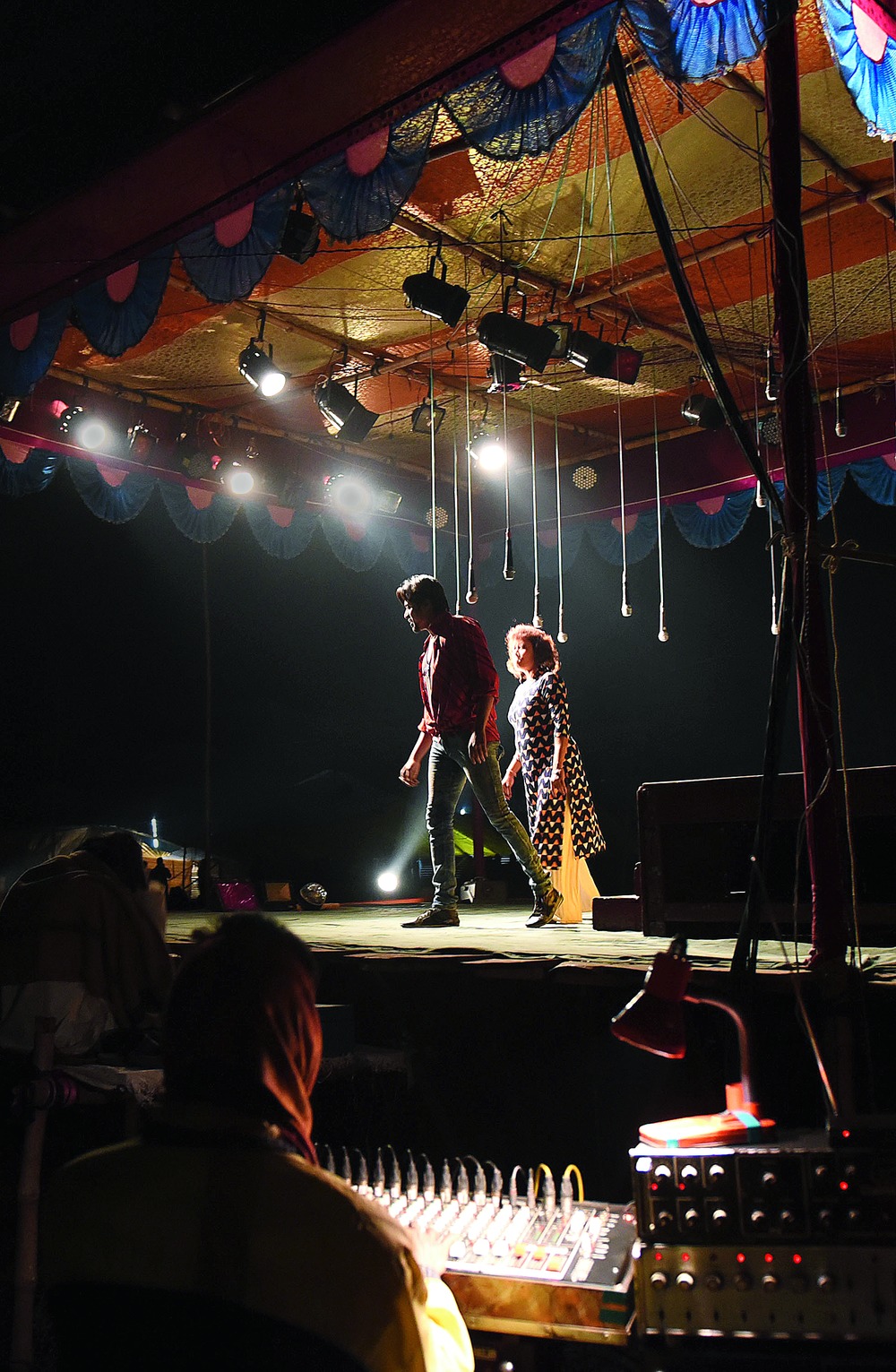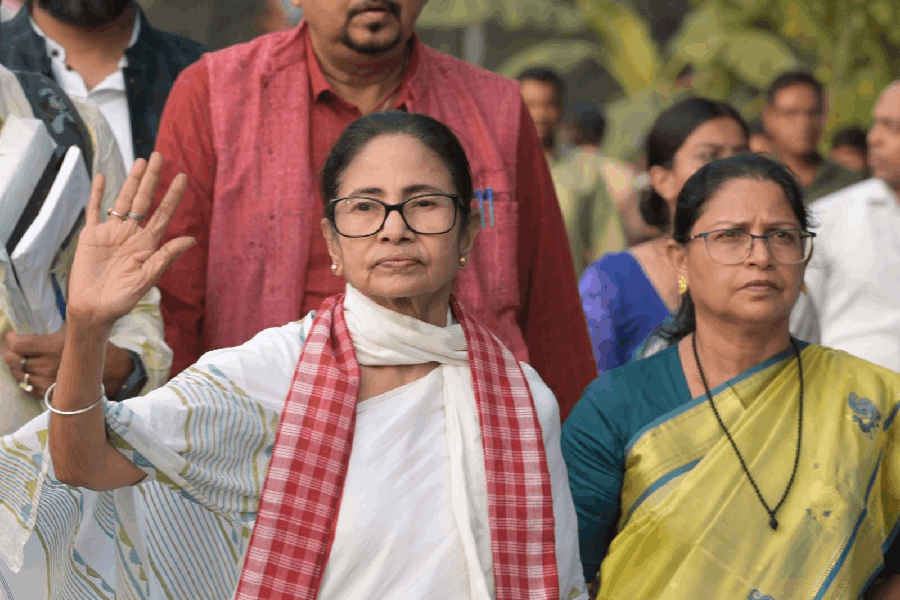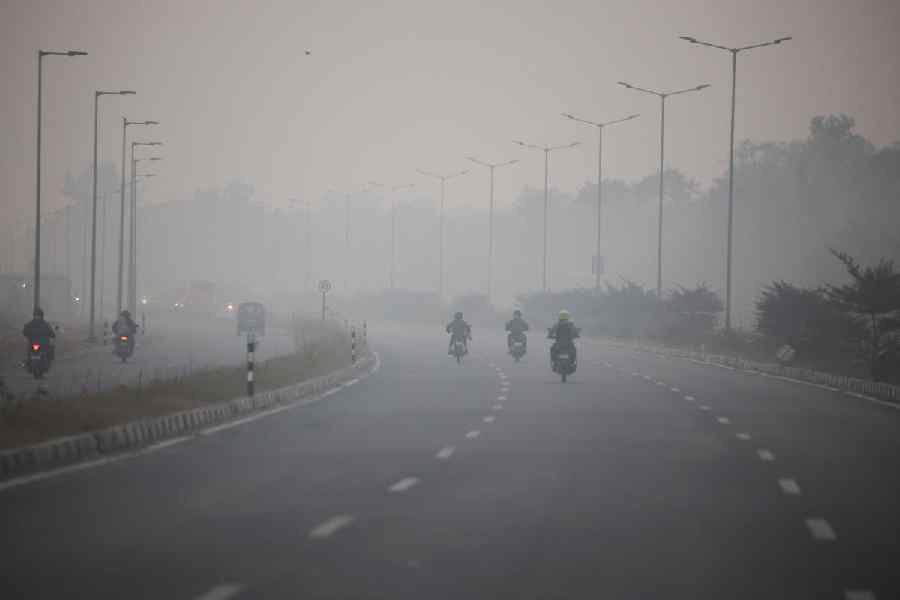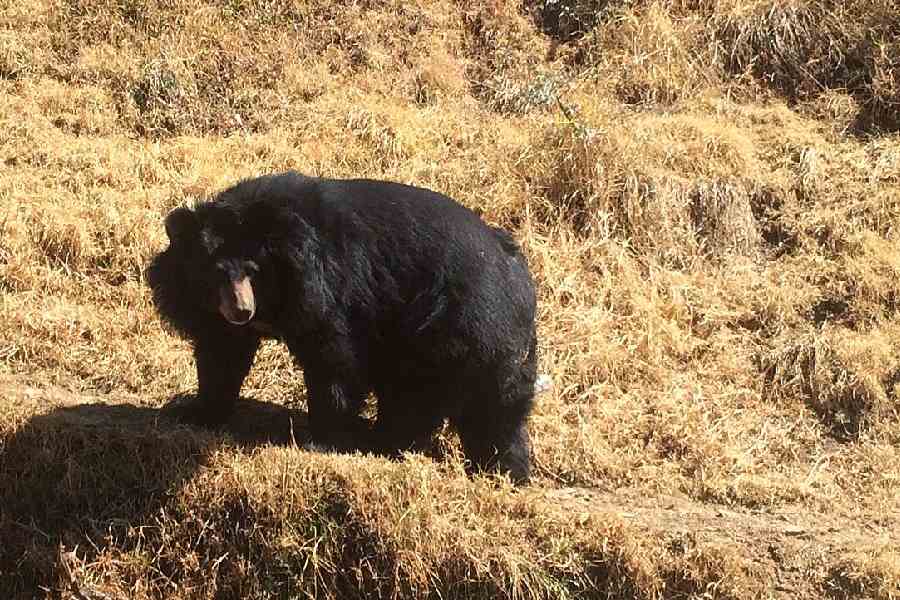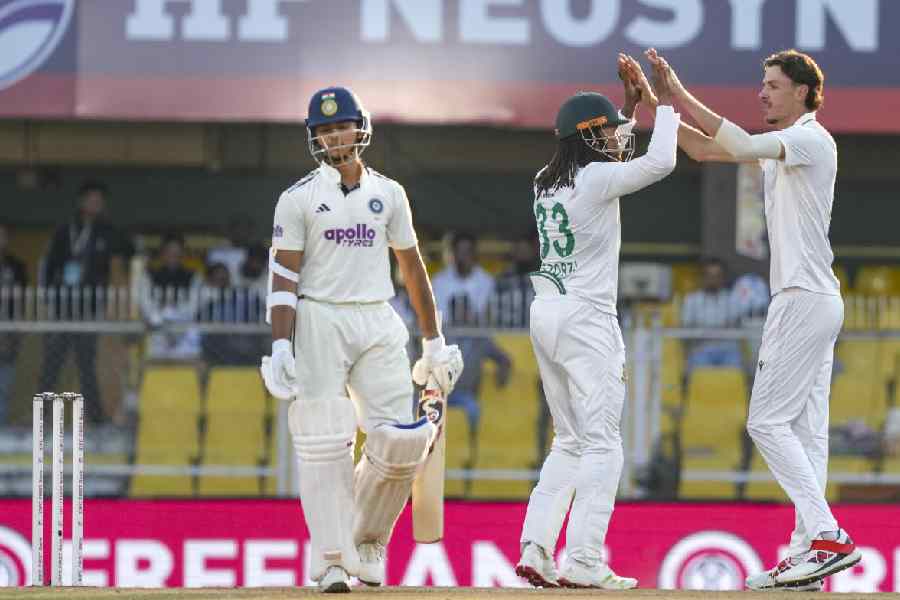
Gangpur railway station is on the Howrah-Burdwan line. When we get off there, it is not yet dusk. The winter countryside is stark. The harvest is over and done with, and swathes of paddy fields now lie bare. Above them, on the blushing horizon you can see the full moon. Unable to contain its excitement, it seems to have done a hasty toilette and wafted out in its finery for the musical soiree.
We start walking towards the Jotram High School grounds, barely a kilometre from the station. As we negotiate our way through the gaggle of cars, trucks and bikes on NH2 headed for Burdwan and turn into the mud track, a booming voice pierces the late evening chill - Aajker jatra pala, Satyanarayan Operar Baasha Bhanga Bhalobasha (Today's jatra pala is Satyanarayan Opera's Baasha Bhanga Bhalobasha, or The Love That Plundered A Nest). Jatra is the generic name for a form of folk theatre and pala refers to the individual act or play.
The Voice continues: "Buy your tickets and take a seat. The show will start at 6.30pm sharp. It will end in time for you to catch the last train to Burdwan at 9.30. Hurry up, bandhugan."


As we keep walking, we pass roadside shops with gaudy posters advertising the pala. And then we spot it - a green tent standing on the school grounds, big enough to accommodate over 5,000 people. Ahead of us are three young men, animatedly discussing what to expect. "You know Kakoli plays a double role. She looks gorgeous. Anol sings quite well..." We hear snatches. Kakoli Choudhury and Anol Chakraborty are supposed to be the current No. 1 jatra " juti" or pair. Kakoli has been acting for the last three decades. Anol acts, writes and also directs.
It looks like it is going to be a full house. There's a small queue at the booking counter and hordes of men and women wrapped in shawls are also seen getting off tractors and jugaad vans and walking towards the tent. Inside, thick plastic sheets cover the ground. On auto mode, the men seat themselves on one side; the women huddle together on the other. To the extreme right are a few dozen plastic chairs for "VIP guests".
Once the seats fill up, the final gong is sounded somewhere backstage. The orchestra, the keyboard, tablas, harmoniums and the octapad go dhan ta nan - signature jatra flourish. Actors appear on the stage, bare except for a raised wooden platform with a canvas canopy and a dozen drop-down mics, and the pala begins.


For the next three hours it has the audience spellbound.
Jatra, Bengal's 500-year-old form of folk theatre, is not just alive; it is thriving. After a series of setbacks and defying stiff challenge from TV soaps, song-and-dance numbers featuring Tollygunge film stars and video parlours dishing out sleaze, it has risen like a phoenix. Baasha Bhanga Bhalobasha debuted last August and is already into its 55th performance. It has travelled to Midnapore, Bankura, Purulia and is now touring the coal belt.
"Did you notice the young people among the audience?" asks Anol. We are in the green room; he is touching up his make-up. The 55-year-old is wearing a dark blue blazer, maroon shirt and trousers. "You must have thought only the middle-aged and the old watch jatras," he adds.
It seems scriptwriters, actors and producers of jatra have shed old flab, returned to tradition where necessary and repositioned themselves. The palas are now shorn of melodrama, the dialogues pithy and the thrust is on acting and acting alone. Says Kakoli, "The jatra tradition demands we act on a bare stage with no props, no scope for retakes and no prompters. Through acting alone we simulate a courtroom scene or a corporate boardroom or a thana on the stark 10x10 stage. Amra morubhumite phul photai (We raise a garden in a desert.)"
Sunil Chowdhury is a veteran playwright and director of several successful jatras. Chowdhury's initiation happened in the mid-1960s. He recalls, "Jatra evolved into its present-day form during the time of Lord Chaitanya in the early 16th century. Then, in the early 1900s historical dramas replaced mythological and devotional palas. During the freedom movement came the Swadeshi palas, and thereafter, political scripts led by Utpal Datta."


In the 1960s the trend of biopics caught on. This was also the time when jatra debuted in the urban space. Chowdhury's play Ogo Bishnupriya apparently ran to packed houses, three shows a day on weekends. Clearly, the bhadralok too was smitten by the jatra.
In the early 1980s, in the coal belts of Dhanbad and Asansol, jatra was a winter treat. Tales from the Hindu mythology (Gangaputra Bhishma), medieval romances ( Laila Majnu), devotional musicals (Meerar Bandhua), biopics ( Hitler or Lenin) and anti-establishment sagas ( Shaada Poshak) would be staged.
The trend of social and family dramas or sentimental romance took off in the 1990s. Says Chowdhury, "That was jatra's heyday. Pala writers like me and Bhairab Ganguly wrote as many as eight palas a year. Chitpur Street [in north Calcutta where jatra producers run office] had over 70 operas. Some palas would run for 200 nights or more."
Word got around that there was a bounty to be made in jatras. And soon a time came when movie stars from Tollygunge and Bombay took to the stage. As the divide between movies and stage blurred, jatra suffered. Its intrinsic folk quality got diluted. The movie stars so used to calling the shots in the studio para began to dictate terms here too. Cash still flowed in but the major share would go to the film stars; the jatra artistes became the "other" in their own territory. Bina Dasgupta, who ruled the stage from the 1980s to 2000 and used to be known as Jatra Lakshmi, had started acting when she was 18. Likewise, legends Shekhar Ganguly, Shanti Gopal, Bela Sarkar, Chhanda Chatterjee. They would start with bit roles such as the bibek or conscience-keeper and then graduate to bigger roles. There were no shortcuts.


After a while, the star appeal began to fade. "The initial curiosity of watching a star in flesh and blood abates after a few shows," says Anol. The industry was beginning to wake up to its mistake, but there was still no solution in sight. Jatra was haemorrhaging. In the meantime, the Internet was spreading its reach.
In the late 1990s, the Left Front government imposed a heavy entertainment tax. There was also a complicated "permission policy". "This would translate into red tape, forcing troupes to pay hefty bribes," says Chowdhury. By the mid-2000s jatra was as good as dead. The offices in Chitpur started to shut shop one after another, artistes retired and wannabe actors shifted loyalty to teleserials.
Says Prabhat Kumar Das, who has been documenting the history of jatra companies for a while now: "Jatra's strong cultural moorings helped it rise from near extinction." Das also credits the Trinamul government for playing a key role in the resurgence of jatra.
"Now there is a single window permission policy that involves a nominal fee," says Tapan Sarkar, head of the Jatra Academy of the Information and Cultural Affairs Department. The academy holds workshops and rewards artistes every year during a month-long festival in January.
Government support has definitely helped the revival, but the industry also took corrective measures. "The trend of hiring stars from Tollywood and TV serials has stopped," says Chowdhury. This has helped cut down the expenses of running an opera and also brought down the sleaze quotient and skin show. "We steer clear of shosta (cheap) gimmicks. After all, jatra is for family viewing," says Kakoli.
Dilip Das is producer and proprietor of Satyambar Opera, a company started by his father nearly a century ago. He says, "Now we are focussing on original plays." Many palas like Paagli Meye Mathae Dilo Ghomta, Aparadh Ami Meye and even Baasha Bhanga Bhalobasha have strong female protagonists. "We are also trying to work into the scripts stories from the contemporary social situation," says Utpal Ray, palakar and director.
Jatra is certainly not in the red anymore, but there is no scope for complacency either. "Our next battle is against social media," declares Anol. He's forging on, fittingly for an art form that derives its name from the Sanskrit yatra, meaning journey. Godspeed.

